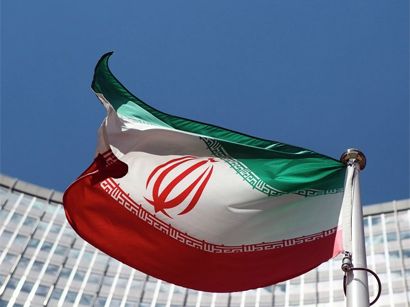Iranian media reflect on ceasefire: military setbacks, political survival, and uncertain future strategy

Following the recently agreed ceasefire with Israel, Iranian media outlets have published a series of reflective articles under headlines such as “Why did Tehran agree to a ceasefire?”, “What happened in 12 days?”, and “What should we do next?”, offering rare insight into internal assessments of the conflict’s outcome, Azernews reports, citing information released via Iranian social media channels.
The analysis reveals that, during the initial stages of the war, Iran suffered significant military setbacks. According to the reports, a combination of internal sabotage and intense Israeli airstrikes led to the widespread disablement of Iran’s long- and medium-range air defense systems.
“From the 2nd or 3rd day of the war, Israel moved almost completely freely in Iranian airspace — first in the West, and then gradually towards the Center. For a while, we also saw drones moving freely, which is an indication of how bad the situation is,” one article noted.
While Iran still possesses a vast arsenal of ballistic missiles and hundreds of launch platforms, air superiority became a decisive factor. Israeli dominance in the skies reportedly prevented Iran from executing any large-scale missile operations.
“Every time Iran tried to remove the launchers from underground bases, Israel immediately detected and destroyed them,” the commentary added, describing Iran’s retaliatory strategy as limited to small-scale, “hit-and-run” missile strikes using older stockpiles from bases in central and eastern regions.
The decision to enter a ceasefire, the media argues, stemmed from a strategic impasse. “Launching 10-20 missiles a day was simply a waste, if there was no greater military goal,” one analysis stated, emphasizing the absence of deterrence from the very start of the conflict.
From a military standpoint, the articles openly acknowledge Israel's victory. “From a military point of view, Israel is clearly the winner, and there is no need to embellish this.” However, politically, they claim Israel failed to meet its objectives: “The main goals were not achieved; the Islamic Republic of Iran is still standing; the nuclear program continues; and martyred commanders were replaced.”
The biggest Israeli success, the media concedes, was the near-total disablement of Iran’s air defense systems, which left the country vulnerable to further escalation without a viable means of response.
Looking forward, Iranian commentators warn that Israel may use the ceasefire to regroup and prepare for further aggression. “They will actually try to gradually advance towards their main goal – regime change,” one piece suggests, adding that Israel might apply a “Lebanese model,” meaning sporadic strikes without triggering a full-scale response.
As for Iran’s path forward, the articles call for a fundamental reassessment of defense priorities. While missile stockpiles remain, the lack of an operational air defense network is seen as the key vulnerability.
“Iran must ensure that this ceasefire is not unilateral, restore its capabilities, and create a mechanism to prevent new Israeli aggression,” one editorial concludes, underscoring a need for rapid military restructuring to prevent a repeat of the current scenario.
Here we are to serve you with news right now. It does not cost much, but worth your attention.
Choose to support open, independent, quality journalism and subscribe on a monthly basis.
By subscribing to our online newspaper, you can have full digital access to all news, analysis, and much more.
You can also follow AzerNEWS on Twitter @AzerNewsAz or Facebook @AzerNewsNewspaper
Thank you!

